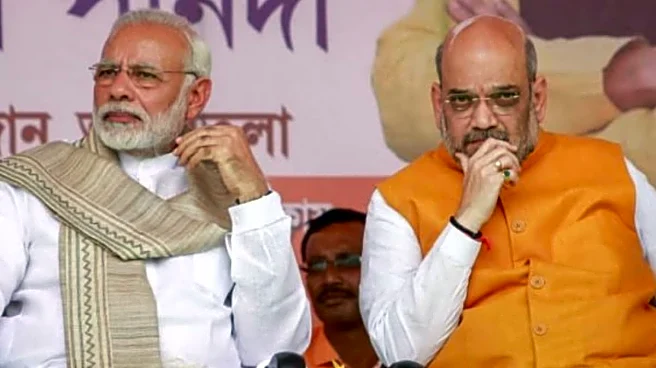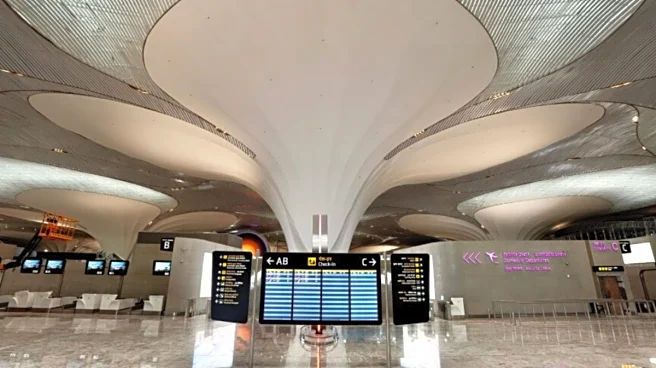On October 15, 2025, Naxalite M Venugopal Rao, also known as Bhupathi, surrendered along with 60 other Naxals in Gadchiroli district. Bhupathi carried a bounty of Rs 6 crore. A day later, 170 Naxalites
laid down their arms.
Overall, in October 2025, India’s security forces continued an aggressive campaign against Naxal-Maoist insurgents, primarily in Chhattisgarh, Jharkhand and Maharashtra. Operations like Black Forest, aka “Kagar” have intensified, focusing on intelligence-driven strikes, surrenders and rehabilitation. In 2025 alone, till date, over 290 Naxals have been neutralised, over 1,090 arrested and over 900 surrendered nationwide. The “Red Corridor” has shrunk to less than 12 affected districts, with activity concentrated in Bastar and Abujhmad regions.
For context, May 2025’s Operation Black Forest killed 31 Naxals in Karreguttalu Hills, including Nambala Keshav Rao, aka Basavaraju, with a Rs 1.5 crore bounty. Over 10,000 Naxals have surrendered since 2015, with over 881 in 2024 alone and more than 900 in 2025. The Narendra Modi government’s decision to rid India of Naxalism by March 31, 2026, as pledged by Union Home Minister Amit Shah, shows that the broader focus clearly remains on sustaining development, building trust and ensuring that the benefits of progress reach the most marginalised sections of society.
It is a matter of immense pleasure that Abujhmarh and North Bastar in Chhattisgarh that were once terror bases, have today been declared as free from Naxal terror.
Now a trace of Naxalism exists in South Bastar, which will be wiped out soon by our security forces.
Since January…
— Amit Shah (@AmitShah) October 16, 2025
The war against Naxal terror is not just about defeating an armed insurgency; it is about securing India’s heartland and creating a future where every citizen can thrive. Under the astute leadership of Prime Minister Narendra Modi, India has seen a significant reduction in Naxal-affected districts as part of a concerted effort to combat Left-Wing Extremism (LWE). The number of districts affected by Naxalite violence decreased from 126 in 2013 to barely a handful across seven states by 2024.
Since assuming office in 2014, PM Modi has prioritised tackling the long-standing challenge of Naxal terrorism, a Left-wing extremist insurgency that has plagued India’s hinterlands for decades. Rooted in socio-economic disparities and ideological extremism, Naxalism posed a significant threat to internal security. Naxalism, inspired by Maoist ideology, emerged in the late 1960s in Naxalbari, West Bengal, as a violent movement advocating for the rights of marginalised communities. Over the decades, it however, morphed into a dangerous insurgency, spreading across states like Chhattisgarh, Jharkhand, Odisha, Andhra Pradesh, Telangana, Maharashtra, and Bihar—often referred to as the ‘Red Corridor’.
PM Modi’s approach in combating Naxalism has been novel and nuanced, never losing sight of the bigger picture. Security forces were equipped with advanced weaponry, surveillance drones and satellite imagery to navigate the dense forests of the Red Corridor. The use of technology, such as GPS-enabled tracking and night-vision equipment, gave forces a tactical edge in guerrilla warfare. The Modi government established forward operating bases (FOBs) in remote areas, disrupting Naxal supply lines and safe havens, forcing insurgents to retreat deeper into forests. In 2017, Operation SAMADHAN, a strategic framework to combat Left-Wing Extremism (LWE) was launched. The acronym SAMADHAN stands for Smart Leadership, aggressive strategy, motivation and training, actionable intelligence, dashboard-based KPIs, harnessing technology, action plan for each theatre and no access to financing.
Shah’s fierce determination to uproot Naxalism has borne stellar results. The Pradhan Mantri Gram Sadak Yojana (PMGSY) was accelerated to construct all-weather roads, connecting remote villages to markets and administrative centers. By 2023, over 12,000 kilometers of roads had been built in LWE-affected districts. Under the Deen Dayal Upadhyaya Gram Jyoti Yojana and Saubhagya Scheme, the Modi government achieved near-universal electrification in Naxal-affected regions. Additionally, the BharatNet project extended high-speed internet to remote areas, enabling access to digital services, education and government schemes. The Modi government also established Ekalavya Model Residential Schools (EMRS) for tribal children, offering quality education and vocational training. By 2024, over 400 EMRS were operational, benefiting thousands of students. Skill development programmes under the “Skill India Mission” provided training in trades like agriculture, handicrafts and technology, creating alternative livelihoods for youth vulnerable to Naxal recruitment.
Schemes like MGNREGA (Mahatma Gandhi National Rural Employment Guarantee Act) and PM Awas Yojana (housing for all) were prioritised in LWE areas to provide employment and housing security. The government also promoted forest-based livelihoods, such as the collection and marketing of minor forest produce (MFP) through the Van Dhan Yojana, empowering tribal communities economically. The Ayushman Bharat scheme provided free healthcare to millions in Naxal-affected regions, addressing a critical grievance exploited by insurgents. Mobile medical units and health camps were deployed to deliver services in remote areas.
Beyond security and development, PM Modi’s strategy emphasised winning the trust of tribal communities, who form the backbone of Naxal support. The government introduced attractive surrender policies, offering financial incentives, vocational training, and protection to Naxalites who laid down arms. Since 2014, thousands of Naxalites have surrendered, with many reintegrated into society through skill development and job opportunities.
The Modi administration encouraged security forces to engage in civic action programmes, such as organising sports events, medical camps and cultural festivals in tribal areas. These efforts humanised the State’s presence and countered Naxal narratives of oppression.
The government worked to expose the contradictions in Naxal ideology, which often exploits tribal grievances while extorting money from the same communities. Public awareness campaigns highlighted the benefits of government schemes and the futility of violence, encouraging youth to reject extremism.
PM Modi’s war against Naxal terror has set a new benchmark for counter-insurgency operations in India. The government’s ability to combine security measures with development and outreach have yielded unprecedented results, bringing the Naxal movement to its weakest point in decades. However, the battle is not over. Empowering local institutions such as Gram Panchayats is enhancing trust and ensuring that development benefits reach the grassroots.
Security operations are being conducted with greater sensitivity to avoid alienating tribal communities. Independent oversight mechanisms are helping to address allegations of human rights’ abuses which were rampant under the previous Congress regime. The Modi government is also tackling the urban networks that provide ideological and logistical support to Naxalites, using a combination of law enforcement and public awareness.
By April 2025, the number of “most-affected districts” (those accounting for 90 per cent of LWE violence) had been reduced from 12 to single digits. These districts are Bijapur, Kanker, Narayanpur, and Sukma in Chhattisgarh, West Singhbhum in Jharkhand, and Gadchiroli in Maharashtra. The number of “districts of concern” (areas with lesser Naxal activity but still monitored) has also decreased from 17 to barely six, including Dantewada, Gariaband, and Mohla-Manpur-Ambagarh Chowki in Chhattisgarh, Latehar in Jharkhand, Nuapada in Odisha, and Mulugu in Telangana. By 2024, states like Bihar, Jharkhand, Odisha, Andhra Pradesh, and Madhya Pradesh had been largely cleared of Naxalism, with Maharashtra nearly free except for Gadchiroli.
Naxal influence is now primarily confined to a few districts in Chhattisgarh. In Chhattisgarh, the area affected by Naxalism has reduced from 18,000 sq. km in 2014 to 8500 sq. km by 2025, with intensified operations since the BJP government took over in late 2023. Between 2004-2014 and 2014-2024, Naxal violence incidents dropped by 53 per cent (from 16,463 to 7744), and deaths of security personnel and civilians decreased by 70 per cent. Significant operations, including Operation Black Forest in 2025,the neutralisation of 22 Naxalites in Bijapur and Kanker (March 2025) and 27 Naxalites, including CPI-Maoist general secretary Nambala Keshav Rao, in Narayanpur (May 2025), highlight the Modi government’s targeted approach.
The Modi government’s strategy includes a multi-pronged approach—ruthless action against armed Naxalites, filling security vacuums with Forward Operating Bases (302 new camps in five years), development initiatives like skilling programmes (Rs 495 crore for 48 Industrial Training Institutes and 61 skill development centers) and lastly, encouraging voluntary surrenders. Financial assistance under the Special Central Assistance (SCA) scheme supports infrastructure development, with Rs 30 crore for most-affected districts and Rs 10 crore for districts of concern.
The path towards a Naxal-free India reflects a combination of security operations, developmental efforts and state-Centre coordination, which has particularly intensified after the BJP formed the government in Chhattisgarh in 2023.The Modi government’s multi-faceted approach has significantly weakened the Naxal movement. The Red Corridor has shrunk considerably, with Naxal influence now limited to a few pockets in Chhattisgarh, Jharkhand, and Odisha. Data from the South Asia Terrorism Portal (SATP) shows a consistent decline in Naxal-related incidents, with 2023 recording the lowest number of attacks in over two decades. Civilian and security force casualties have also plummeted. Targeted operations have eliminated or arrested key Naxal leaders, disrupting command structures. For example, the 2021 killing of senior Maoist leader Milind Teltumbde in Gadchiroli was a major blow to the movement. The combination of military pressure and rehabilitation programmes led to a surge in surrenders.
Naxalites, for decades, exploited socio-economic grievances, targeting government institutions, security forces and infrastructure while extorting funds from local businesses and mining operations. The movement thrived in remote, forested areas where State presence was weak and poverty, lack of education and unemployment provided fertile ground for recruitment of gullible youth by Naxalites. Upon taking office, PM Modi recognised that a purely militaristic approach would not suffice to eradicate Naxalism. His government adopted a dual strategy—neutralising the armed threat through enhanced security operations and addressing the root causes of the insurgency through development and governance. One of the cornerstones of PM Modi’s war against Naxal terror has been the modernisation and intensification of security operations. Shah bolstered the capabilities of the Central Reserve Police Force (CRPF), state police forces and specialised units like the Commando Battalion for Resolute Action (CoBRA), displaying his characteristic administrative flair. Improving intelligence-gathering mechanisms to pre-empt Naxal attacks was prioritised.
The establishment of Multi-Agency Centers (MACs) and State Multi-Agency Centers (SMACs) facilitated real-time intelligence sharing between central and state agencies. This led to more precise operations, reducing collateral damage.
Remember, under the erstwhile Congress regimes, Naxalism thrived as the Congress-Left ecosystem refused to acknowledge the problem, much less dealing with it. Under PM Modi’s leadership, India has made remarkable strides in its fight against Naxal terrorism. By blending aggressive security operations with transformative development initiatives, the Modi government not only weakened insurgency, but also addressed the socio-economic factors that fuelled it.
As India moves rapidly toward its goal of eliminating Naxalism, PM Modi’s administrative finesse and multi-pronged approach, often encapsulated in the phrase “Vikas aur Vishwas” (Development and Trust), is dismantling Naxal networks with alacrity, while integrating affected communities into the mainstream.
Sanju Verma is an Economist, National Spokesperson of the BJP and the Bestselling Author of ‘The Modi Gambit’. Views expressed in the above piece are personal and solely those of the author. They do not necessarily reflect News18’s views.









/images/ppid_a911dc6a-image-176052522832899865.webp)




